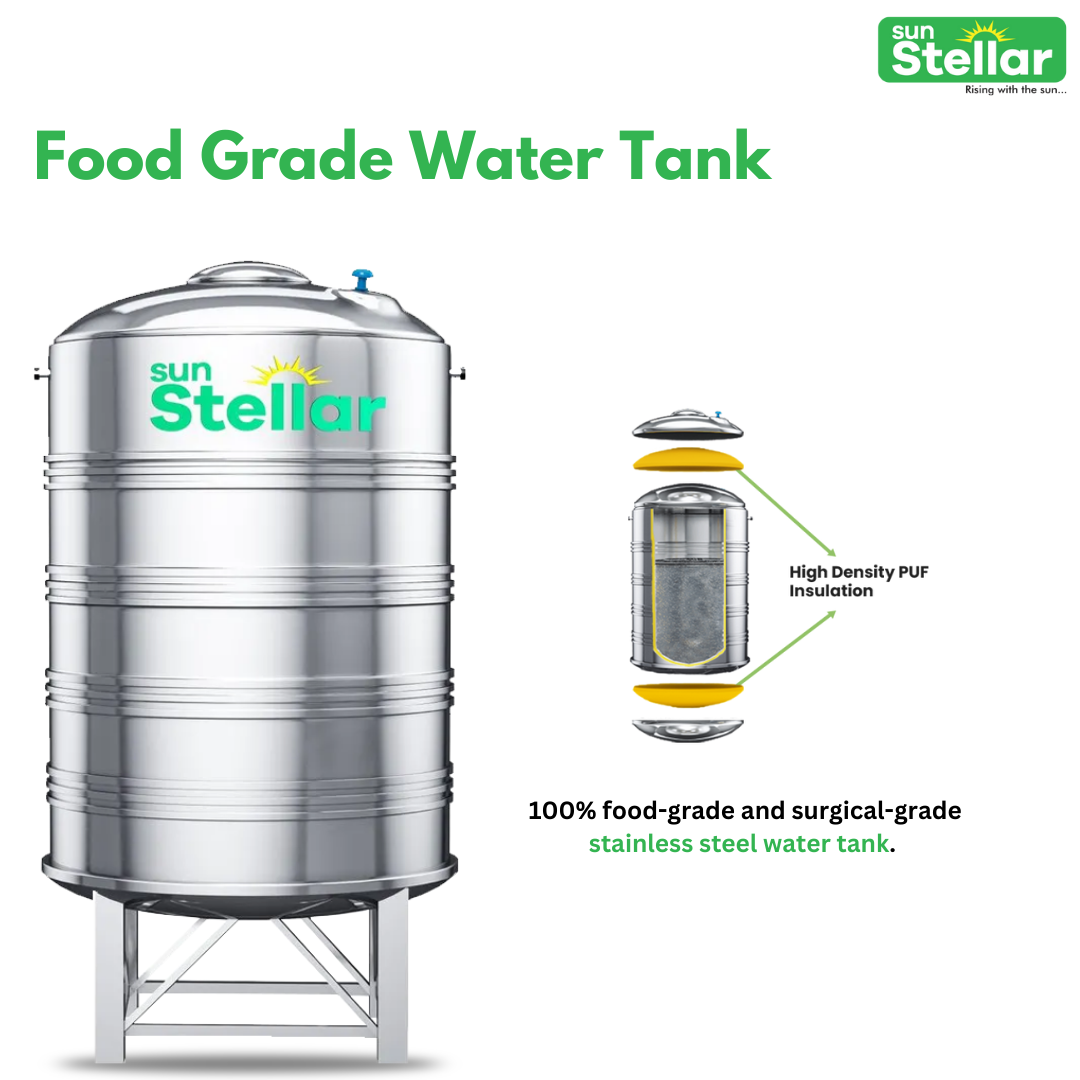Water is life. Water storage may exert a great influence on what you drink in terms of quality, potability, smell, and taste. Households and commercial premises use water storage tanks, yet not all tanks are made equal. The difference in terms of food-grade water tanks and conventionally treated water storage tanks is that it would directly affect your health and your pocket over time, in case it is not well thought of. So let’s delve into these key differences, some pertinent health issues, and the costs, so that the best choice can be made.
What Are Food-Grade Water Tanks?
Excellent food-safe water containers are made from the highest quality materials, BPA-free, and non-toxic. Food-grade tanks must be safely designed and certified to store potable water, meaning none of the toxic chemicals will leach into the water. The interior surfaces of food-grade tanks can be smooth, non-reactive, and antibacterial to prevent degradation of water quality and safety through bacterial action.
Conventional tanks are often manufactured from cheap plastic, with many plastic tanks not being tested or certified for drinking water safety.
Health Risks of Regular Tanks
Drinking water is squarely in the center of health concerns, and water confined in any non-food-grade tank can be subject to multiple negative factors.
- Chemical Leaching
There are a lot of inexpensive plastic tanks that often leach harmful chemicals (for example, BPA, lead, phthalates) into the water. Over time, it paves the way for hormonal disruption, neurological impairments, or chronic diseases.
- Microbial Growth
The inexpensive plastic tanks have a rough interior condition that will encourage algae, mold, or even bacteria to grow. If consumed from such tanks, it can lead to gastrointestinal diseases, infections, or potentially diseases related to water contamination.
- Metal Contamination
Regular, cheap steel tanks may corrode and create rust. They also emit heavy metals into the water supply, which can deteriorate the flavor and safety of the water. Always opt for food-grade water tanks and for the best quality water flow.
- Taste/Smell
The taste of chemical residues will sometimes become bitter or exhibit a foul odor resulting from microbial growth.
That’s why it is always a safe idea to get your water storage from reliable and top water tank manufacturers.
Advantages of Food-Grade Water Tanks
The advantages of switching to food-grade tanks cancel most of these concerns. Key advantages include:
- No Corrosion: These stainless steel water storage tanks lack rusting properties like ordinary steel tanks, which, due to any rust, shall not compromise water.
- Safe Drinking Water: Non-toxic materials ensure that the water is safe from any odor or chemical harm.
- Hygienic: They have smooth, glossy interiors that make cleaning easier and provide less room for the growth of bacteria in food-grade tanks.
- Better Water Taste and Quality: A food-grade tank ensures that water stays fresh and pure, free from any harmful substances, and is healthy to drink.
Long-Term Financial Comparison
The maintenance of the standard tanks might seem cheaper in comparison to food-grade tanks. However, in the long run, they are much more expensive as compared with the initial investment.
- Maintenance Costs
Standard tanks need to be cleaned, repaired, or in some situations even replaced because of microbial growth and degradation of materials. Although food-grade tanks cost more initially, maintenance, in most cases, is usually far less frequent.
- Healthcare Costs
Poor quality water results in illnesses among families or workers, in turn increasing medical costs. Water stored in BPA-free water storage tanks lowers the possibilities of such uncertainties occurring.
- Replacement Costs
Regular tanks often require replacement every 5–7 years due to cracks, UV damage, or rust. Food-grade tanks, particularly stainless steel tanks, can last 20 or more years with little maintenance.
- Hidden Costs
Using unsafe tanks often leads families and businesses to purchase bottled water. This fact creates a recurring cost that can quickly offset the expense of purchasing a food-grade tank.
Making the Right Decision Regarding Your Water Tank
If the goal is to safely and reliably store water, it is obvious that food-grade tanks are a smarter choice. Although food-grade tanks cost more at the outset, long-term benefits will protect your health, require far less maintenance, and save costs long-term, far outweighing any risks of using non-food-grade or utility tanks.
If you are a homeowner, business, school, or hospital choosing food-grade tanks, it is not just about the equipment purchase; it is essentially an investment in health, safety, and sustainability. What else are you waiting for? Get in touch with the best water tank company without any further delay.
